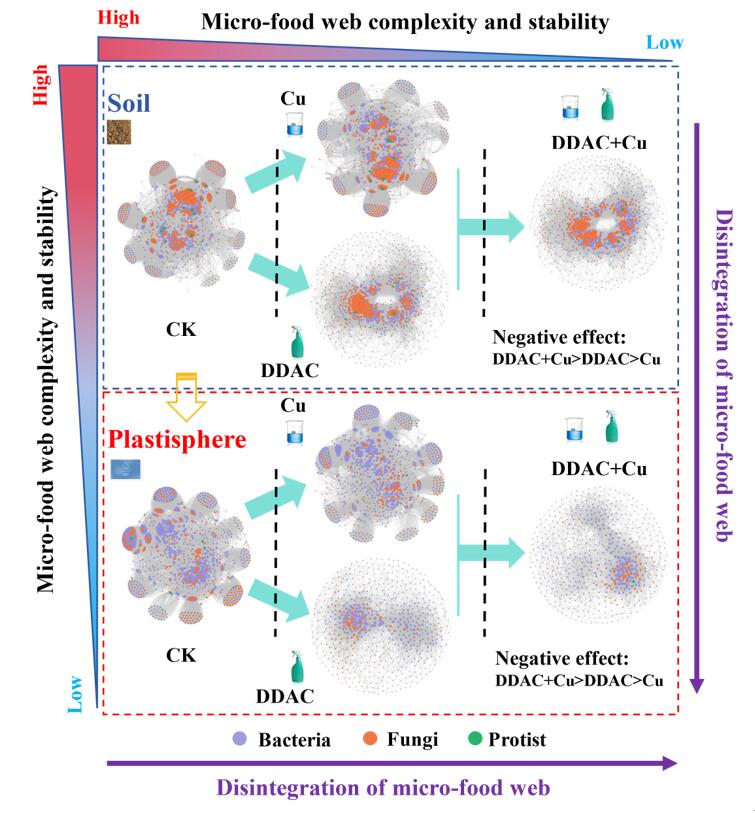

Microbial interactions form microfood webs, crucial for ecological functions. The steady state of these webs, shaped by cooperation and competition among trophic levels, prevents pathogen proliferation and invasion, maintaining soil health. Combined pollutants pose a widespread environmental issue, exerting significant pressure on microfood webs. However, understanding how these webs respond to combined pollutants in soil plastispheres, an emerging niche, remains limited. This study explores trophic interactions among bacteria, fungi, and protists, examining their effects on potential pathogens in three soil types amended with Cu or disinfectant, along with their plastispheres, using a microcosm experiment. Pollutant exposure disrupts trophic-level interactions through bottom-up and top-down regulation in soils and plastispheres, respectively. Microfood web network topology parameters prove more sensitive to pollutant stress than indicators from a single trophic-level community composition. Combined exposure causes greater disruption to the microfood web than exposure to a single pollutant (Cu or didecyl dimethylammonium chloride (DDAC)). Plastisphere reinforces negative impacts of combined pollutant exposure on the microfood web network, escalating potential pathogenic bacteria. Overall, this study deepens our understanding of microfood web responses under pollutant pressure in soil plastispheres and provides valuable insights for health risk assessments of soil combined pollutants.
